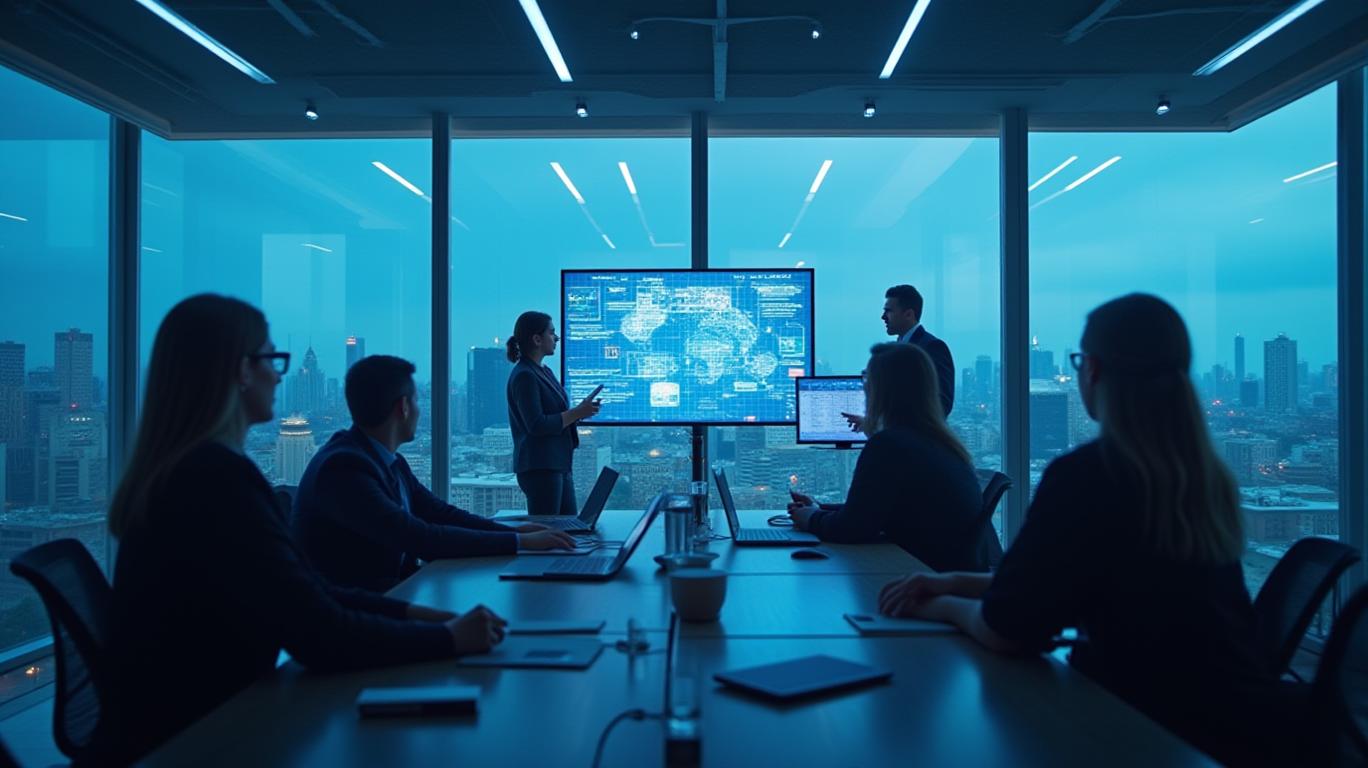AI-Driven Marketing: The 2025 Playbook for Cost Efficiency, Scale, and Competitive Edge
The marketing landscape in 2025 is undergoing a quiet revolution. A staggering 85% of marketers now use AI tools for content creation, from copywriting to social media campaigns, with 43.46% citing significant cost reductions and 79% reporting increased efficiency. This shift isn’t just about saving time—it’s a strategic arms race to dominate markets with scalable, data-driven strategies. But beneath the surface, risks loom. Over-reliance on AI could erode creativity, alienate customers, or expose firms to regulatory fallout. For investors, the challenge is clear: identify companies that harness AI’s power while balancing human oversight and ethical governance.

The AI Opportunity: Cost Reduction & Scalability
The data is unequivocal: AI isn’t just a buzzword—it’s a profit engine. Consider these stats from 2025’s State of AI in Marketing Report:
- Time savings: Marketers gain over 5 hours weekly by automating repetitive tasks like draft writing or data analysis.
- ROI gains: AI-driven campaigns average a 35% ROI boost, with sectors like SEO and social media leading the charge.
- Scalability: 55.05% of firms use AI to scale content output without expanding teams, enabling hyper-personalization at global scale.
Take Starbucks, which reduced customer service costs by 15% using AI-generated emails, or Heinz, whose AI-designed ketchup bottles garnered 800 million earned impressions. These companies aren’t just cutting costs—they’re leveraging AI to redefine customer engagement.
Adobe’s stock, buoyed by its AI-powered Creative Cloud tools, has outperformed competitors by 25% since 2023. This gap underscores a broader truth: firms embedding AI into core workflows are pulling ahead.
The Risks: Over-Reliance on AI and the Need for Human Touch
Yet success isn’t guaranteed. Over-reliance on AI can backfire:
- Creativity deficits: Lexus’s AI-generated commercials, while technically polished, lacked the emotional depth that human storytellers provide.
- Bias and compliance issues: Coca-Cola’s “Share a Coke” campaign faced backlash when biased algorithms excluded minority names, triggering a 12% engagement drop among underrepresented groups.
- ROI blind spots: 51% of marketers can’t track AI’s ROI, risking wasted investments in tools that fail to deliver measurable value.
The solution? Hybrid models that pair AI’s speed with human judgment. JP Morgan Chase, for example, uses AI to draft marketing copy but retains editors to refine tone and compliance—a strategy that boosted engagement by 22% while reducing errors.
Actionable Insights for Investors
To profit from this trend, focus on firms that:
- Blend AI with Human Oversight:
- Look for companies with “content centaurs”—teams where AI drafts ideas, and humans refine them for brand voice and nuance.
Avoid firms relying solely on generic tools like ChatGPT; instead, prioritize those using domain-specific AI (e.g., Bloomreach’s SEO-focused platform, which boosted output by 113%).
Prioritize Data Governance:
Favor firms with AI ethics committees (now adopted by 50% of enterprises) and robust bias audits. Novo Nordisk’s email campaigns, which reduced algorithmic bias by 40%, are a prime example.
Track Measurable ROI:
Seek companies transparently measuring AI’s impact. Starbucks and Verizon have set benchmarks, linking AI adoption to 15–20% cost savings in customer retention.
Target High-Growth Sectors:
- SEO and personalization: Tools like Bloomreach or Vista Social (which boosted influencer ROI by 30%) are critical for 2025’s hyper-competitive markets.
- Social media: Platforms like Meta’s AI-driven ad targeting (already lifting engagement by 35%) offer scalable growth opportunities.
Conclusion: Act Now or Risk Being Left Behind
The stakes are clear: 85% of marketers plan to expand AI integration over the next two years, while laggards face shrinking margins and eroding customer trust. Investors ignoring this trend will miss out on firms like Adobe, Bloomreach, and Synthesia, which are already capitalizing on AI’s power.
The path forward is simple: invest in companies that marry AI’s efficiency with human creativity and ethical governance. Those that do will dominate 2025’s marketing landscape—while others will scramble to catch up.
John Gapper
May 20, 2025

Comments
No comments yet